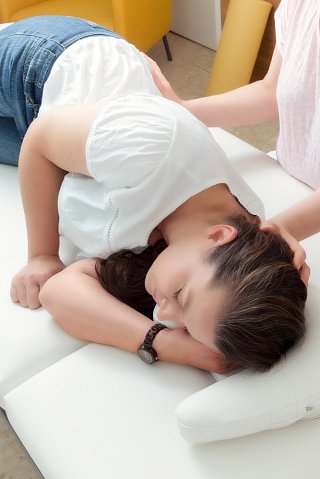Scoliosis in Children

What is Scoliosis? Scoliosis is a musculoskeletal disorder in which there is a sideways curvature of the spine, or backbone.
Some people who present with this require scoliosis treatments. Other people, who have milder curves mild scoliosis - may not need any treatment, but just need to visit their doctor or physiotherapist for regular reviews only.
People of all ages can have scoliosis, but here I am going to focus on children up to adolecence.
Most recent statistics suggest that 3 out of every 1000 children develop spinal curves that are considered large enough to require treatment.
Adolescent Scoliosis
Scoliosis in Children
Adolescent idiopathic scoliosis is the most common scoliosis presentation that I see in my clinic. It generally occurs after the age of 10. Girls are more likely than boys to have this idiopathic (unknown cause) type of scoliosis.
Because scoliosis can run in families, a child who has a family member with congenital scoliosis requires regular checks for scoliosis by their doctor or Physiotherapist.
Idiopathic scoliosis can also occur in children younger than 10 years of age, but is less common. Early onset, known as infantile idiopathic scoliosis occurs in children younger than 3 years old. Juvenile idiopathic scoliosis occurs in children between the ages of 3 and 10. So, although idiopathic scoliosis can occur at any age it is most common in the 10-15 age bracket.
I prefer to look at scoliosis as structural versus non-structural.
Structural is where there is a hereditary cause such as a medical condition or birth defect of some nature. Idiopathic scoliosis falls into the structural category.
Non-structural scoliosis is a curve in your spine which is temporary in nature. This is the type of scoliosis that I had myself.
It develops as a result of back or neck pain. It can be caused by leg length differences, inflammation or any tracking problem in the bones and muscles of your body.
The good news is that a good physiotherapist can change it!!
Identifying the cause, and then treating it and correcting the problem will eliminate your scoliosis completely. Early detection of Scoliosis and intervention is the key!
Sponsored links
DISCLAIMER
While the content and materials contained in the articles on this website have been written & researched by Sally Ann Quirke, a professional, practising & fully qualified Chartered Physiotherapist (Physical Therapist) based in Ireland, they are provided for general information and educational purposes only. They do not constitute medical advice on any particular individual situation. Please see your Chartered Physiotherapist or other medical practitioner for full and individual consultation.
Please read the full disclaimer here.
Cookies and Privacy
By using this website, you consent to the use of cookies in accordance with our cookie policy. For more information on how we use cookies, please read our cookie policy here.
